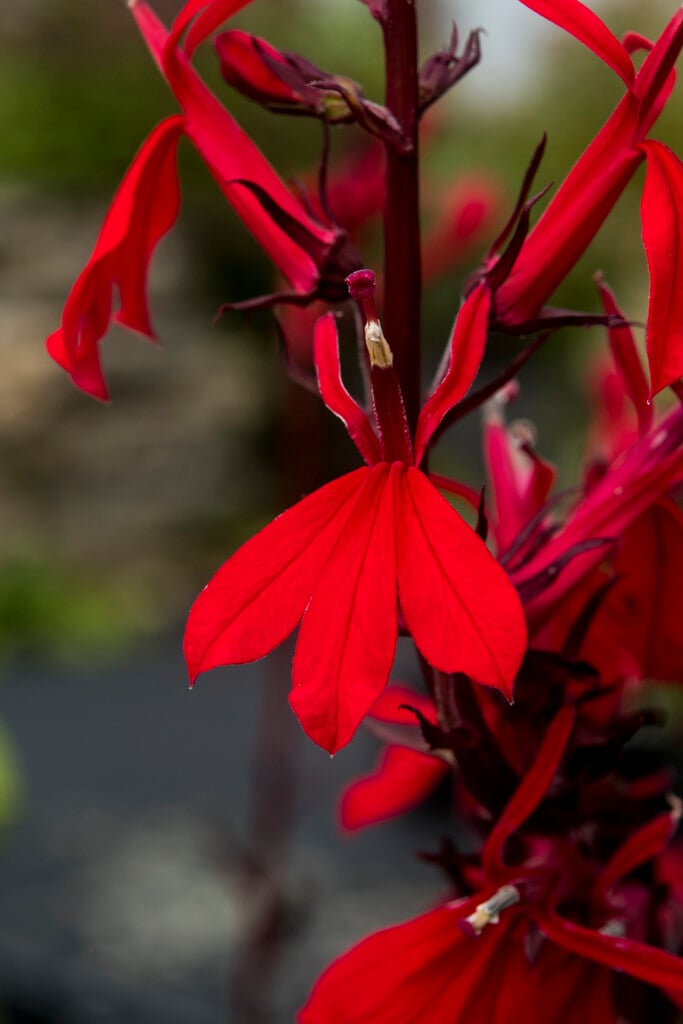Lobelia cardinalis 'Queen Victoria'
cardinal flower 'Queen Victoria'
'Queen Victoria' is a short-lived herbaceous perennial to 90cm in height, with beetroot-coloured, oblong leaves and bright scarlet, two-lipped flowers in long terminal racemes
Size
Ultimate height
0.5–1 metresTime to ultimate height
2–5 yearsUltimate spread
0.1–0.5 metresGrowing conditions
Moisture
Moist but well–drained, Poorly–drainedpH
Acid, Alkaline, NeutralColour & scent
| Stem | Flower | Foliage | Fruit | |
| Spring | Purple | |||
|---|---|---|---|---|
| Summer | Red | Purple | ||
| Autumn | Red | Purple | ||
| Winter |
Position
- Full sun
- Partial shade
Aspect
South–facing or East–facing or West–facing
Exposure
Sheltered Hardiness
H3Botanical details
- Family
- Campanulaceae
- Native to GB / Ireland
- No
- Foliage
- Deciduous
- Habit
- Clump forming
- Potentially harmful
- Harmful if eaten, skin irritant. Wear gloves and other protective equipment when handling Wear gloves and other protective equipment when handling. Pets: Harmful if eaten, skin irritant. For further information and contact numbers regarding pets, see the HTA guide to potentially harmful plants
- Genus
Lobelia can be annuals, perennials or shrubs, with simple leaves and showy 2-lipped flowers that may be solitary or in racemes or panicles
- Name status
Accepted
How to grow
Cultivation
Grow in deep, fertile, reliably moist soil such as a bog garden in full sun or partial shade. Protect with a dry winter mulch; can be short-lived
Propagation
Propagate by division in spring
Suggested planting locations and garden types
- Cottage and informal garden
- Flower borders and beds
Pruning
Cut down faded flower spikes in autumn
Pests
May be susceptible to slugs
Diseases
May be susceptible to crown rot
Get involved
The Royal Horticultural Society is the UK’s leading gardening charity. We aim to enrich everyone’s life through plants, and make the UK a greener and more beautiful place.
